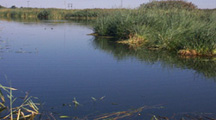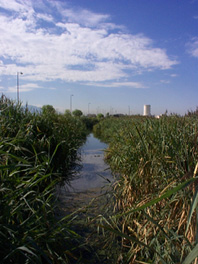Water Reclamation Plant Wetlands
August 12, 1998
|
The purpose of the project is to enhance the urban wetlands in this portion of the Great Basin desert as a statement of the community’s sensitivity to environmental values. A committee was form representing the following agencies to consult on the project:
- Utah Department of Natural Resources, Wildlife division
- U.S. Fish & Wildlife Service
- Utah Department of Health, Bureau of Water Pollution Control
- Salt Lake City County Health Department
The amenities of the project are as follows:
- Provide needed wetlands for bird migration and habitation.
- Provide needed urban wetlands for public enjoyment
- Provide new use of treated wastewater.
- Provide a research facility wetlands treatment of stormwater.
- Improve the appearance of the Water Reclamation facility.
Jon Adams plant manager notes that “It’s a nice addition to the plant. There is a lot of public interest in the wetlands, many folks take their lunch hour at the site to observe the wide variety of birds and wildlife.” According to Mr. Adams, “There are nearly 100 different bird species identified that inhabit the wetlands, and diverse wildlife, such as muskrat, raccoons, skunks, foxes and small rodents.” The wetlands is “doing good” says Mr. Adams. The ecosystem had matured to include a number of predators. Mr. Adams has observed hawks and eagles in the area. The University of Utah and the State Division of Natural Resources have sent study teams to observe the wetlands and life using the habitat.
|
Questions can be directed to Jon Adams: john.adams@ci.slc.ut.us

